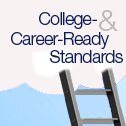The Washington-based Center for American Progress released a report this morning looking at how much time students spend taking state- and district-required tests.
The report coincided with a joint announcement from the Council of Chief State School Officers and the Council of the Great City Schools that the groups would work together to reduce unnecessary testing while staying the course on annual standardized assessments.

Researchers from CAP looked at 14 urban and suburban districts in seven states during the 2013-14 school year, and examined the assessments required by the state and district at each grade level. The analysis includes state and district tests taken by all students. CAP found the following:
- More tests are required at the district level than the state level. High school students take twice as many district tests. Most of those are interim benchmark exams, given two to four times a year.
- Students in grades 3-8 take the most tests—an average of about 10 per year. K-12 students in general take an average of about one test per month.
- Less than 2 percent of instructional time, on average, is spent taking tests. Students in grades 3-8 take about 15 or 16 hours of state and district tests per year.
- State tests tend to be longer than district tests, though they’re taken less frequently.
The report, titled “Testing Overload in America’s Schools” and written by Melissa Lazarin, includes policy recommendations, the first of which is that states should implement the upcoming tests aligned to the Common Core State Standards. Lazarin writes:
Because they are of higher quality, include more open-ended questions, and are more useful for instruction, the new Common Core-aligned state assessments are less likely to lead to teaching to the test. These assessments also offer the promise of reducing the need for districts to layer on additional tests to compensate for low-quality state tests.
The left-leaning think tank has been a strong advocate of the common core and has written before about strategies for making a smooth transition to the new standards.




